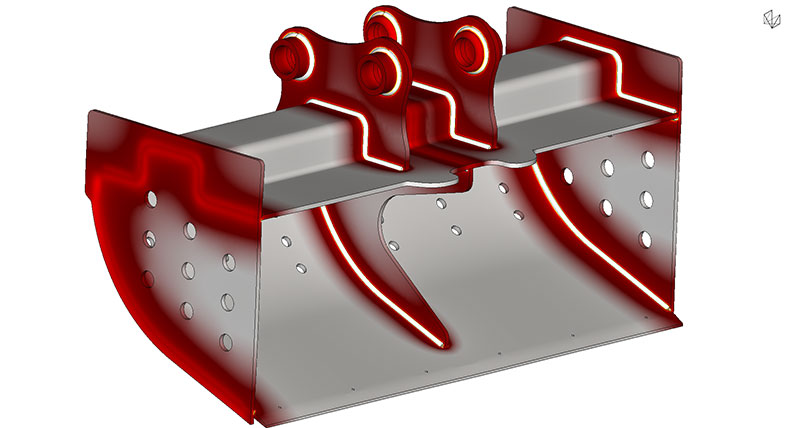
Hexagon’s Manufacturing Intelligence division has signed a partnership agreement with ESAB, a global fabrication technology leader, to create a streamlined welding solution combining Hexagon’s powerful simulation software with ESAB’s InduSuite solutions to help fabricators perform more efficient and successful welding operations. Hexagon’s simulation intelligence, embedded within ESAB’s software and automation portfolio, will ensure that users have the tools required to consistently manufacture high-quality products without costly trial and error.
Producing successful welds can be challenging without the benefit of many years’ shop-floor experience and, even with an extensive welding experience, can incur high costs from waste and time. The need to increase process efficiency for the production of welded products in industries such as automotive, aerospace and capital-intensive machinery has increased automation in recent years, but manufacturers now stand to benefit from additional gains by automating elements of design for manufacturing, and ensuring consistent and reliable welding processes with simulation.
“ESAB’s partnership with Hexagon will increase manufacturers’ confidence in their welding expertise,” said Jonas Glimden,VP Digital Solutions and Robotics. “Manufacturers have had the machinery to perform welds as efficiently as possible, and now we can offer our customers a higher level of built-in knowledge with our joint software solutions to help them make better decisions across their fabrication workflow.”
ESAB’s InduSuite increases efficiency and precision on the shop floor by enabling fabricators to digitise welding processes for its machines and centralising weld specifications to ensure consistent, high quality welding operations. This will now include Hexagon’s Simufact Welding software, helping users to optimise weld sequences and locations by predicting issues such as component distortion based upon induced stresses for operators at the machine. Through the partnership, Hexagon will utilise key parameters from ESAB’s automated robotic fabrication machines to build and refine a digital twin so that fabricators can better gain a deeper understanding of their process, making optimal data-driven decisions without relying solely on costly trial and error.
“By coupling ESAB’s best-in-class welding and robotics solutions with the predictive power of Hexagon’s simulations, we will remove guesswork and ensure even better outcomes, instilling much greater confidence in production quality before costs are incurred,” said Jessica Zheng, Head of Virtual Manufacturing & Costing at Hexagon. “Embedding a digital twin within ESAB’s solutions makes the entire fabrication process smarter by ensuring that key decisions can be made on the shop floor with less dependence on scarce experience and more confidence in data.”
To bring products to market faster than ever without compromising on quality, manufacturers need to move quickly from underdefined or unrefined processes to delivering competitive quality and cost. Using simulation to automate process creation and refinement reduces or eliminates physical manufacturing iterations, and the resulting scrap. For example, battery pack demand has increased dramatically as a result of transport electrification, but each fabricated structure can require up to 10,000 welds. Each joint must be robust, and perform in an optimal sequence that accounts for efficiency whilst ensuring thermal-mechanical stresses do not compromise the joint and product quality.














